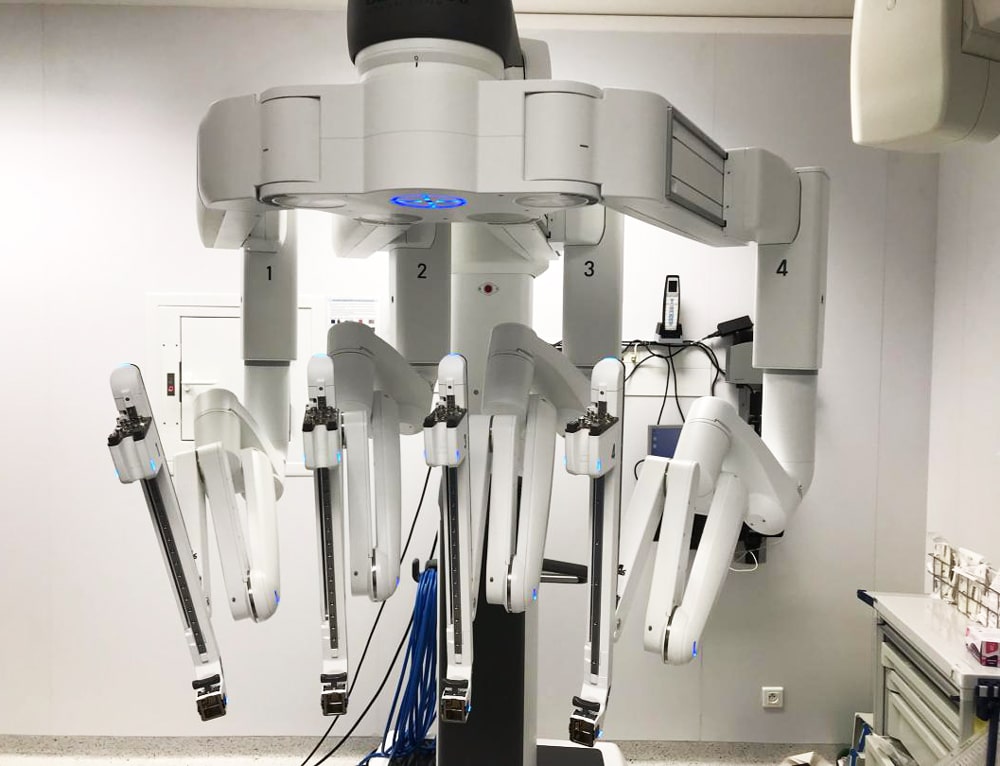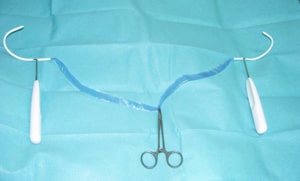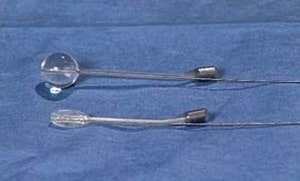Treatments and innovations
Prostate cancer
Radical prostatectomy (removal of the prostate) is a possible treatment for prostate cancer when it is potentially aggressive but not yet advanced (tumour located in the prostate gland). Radical prostatectomy is not justified for early, non-aggressive micro-tumours, which are treated with alternative, less invasive treatments, or simply monitored. An open or laparoscopic prostatectomy can be performed. A laparoscopic prostatectomy can be performed with or without robotic assistance.

Brachytherapy is an alternative to a prostatectomy for cancers that are not aggressive. This operation consists in implanting radioactive seeds inside the prostate, that induce an interstitial radiation. It is less invasive than the prostatectomy, causing less urinary and sexual after-effects. We propose this technique in partnership with the George Pompidou European Hospital, located in the15th arrondissement of Paris.
Within the framework of the research clinic, we can offer focal laser treatment or microwave therapy in certain very localized forms of prostate cancer. This new procedure consists of treating only one part of the prostate, and not the entire gland. A necrosis is induced at the precise area where the cancerous site was detected. This technique is still under evaluation in several European centres, including our own. It can only be performed within the framework of a research protocol. The advantage would be to induce a very limited, or even eliminate the percentage of urinary and sexual disorders.
Benign prostatic hyperplasia (adenoma)
The endoscopic treatment of the prostatic adenoma may be performed through a classic resection technique, a bipolar resection technique, vaporisation, or Holmium laser enucleation (HOLEP technique).
The use of the Holmium laser enables endoscopic treatment of prostatic hypertrophies of all sizes. In our department, no open prostatectomy is performed for prostate adenoma. Certain techniques offer the advantage of reducing bleeding, in particular in patients on blood thinner for cardiovascular diseases. Reducing the risk of haemorrhage allows to limit general complications and hospitalisation time. All of these techniques are available in our department. They are adapted to the patient’s medical antecedents, the patient’s preferences, and to those of the surgeon.
Finally, in the aim of reducing complications associated with the treatment of adenoma, we offer Urolift® prostatic urethral lift implants. This innovative procedure consists in an endoscopic compression of the adenoma's edges by implanting retractable wires. The urethral lumen is therefore enlarged to allow an improved urinary flow. This is an outpatient procedure (one-day hospital stay). This is the only surgical treatment for prostatic hypertrophy that does not lead to sexual adverse effects.
Kidney surgery
We treat all renal pathologies, notably tumours (cancer or benign lesions) and malformations (pyelo-ureteral junction syndrome). Most of these operations can be performed by laproscopy, eventually robot-assisted.
Tumours of the bladder
There is a technique for improving endoscopic detection of certain tumours of the bladder. This procedure applies especially to recurrent tumours and flat tumours that are difficult to visualise.
A product is instilled before the cystoscopy that makes the tumours fluorescent. Certain studies show that this technique improves the detection of tumours, and allows a more complete removal.

Renal stones
All modern treatments for renal stones are available in our department. According to the size, the location and the composition of the stones, we can use extracorporeal lithotripsy, ureteroscopy, flexible renoscopy and laser fragmentation of the stones, or percutaneous surgery.
Urinary incontinence
We have all the new techniques for treating urinary incontinence, whether for women or for men after prostatic surgery.
In women, stress urinary incontinence is often treated by suburethral slings. When leakage occurs outside of physical effort, with urge incontinence (over-active bladder), it is sometimes necessary to perform botulinum toxin intravesical injections or a sacral neuromodulation. The latter option consists of placing an electrode in contact with the nerve that regulates bladder contraction.
In men, moderate incontinence can be treated by suburethral slings or periurethral balloons. As a last resort, severe incontinence requires the introduction of an artificial urinary placement. All of these devices are used in our department.

